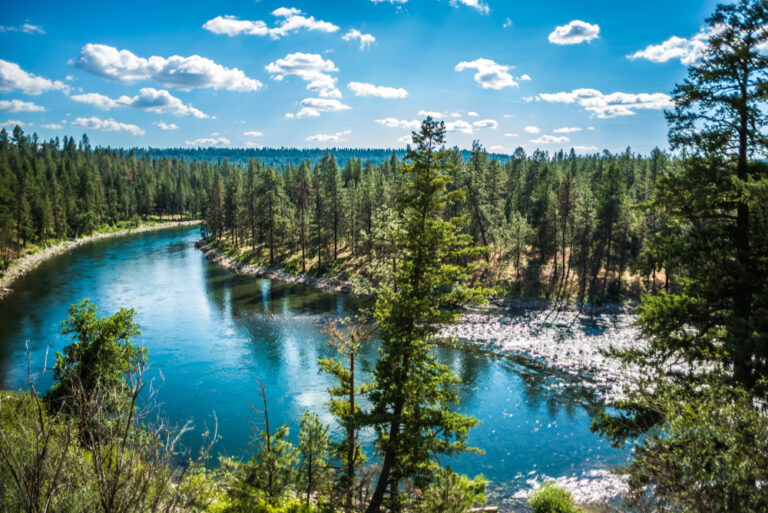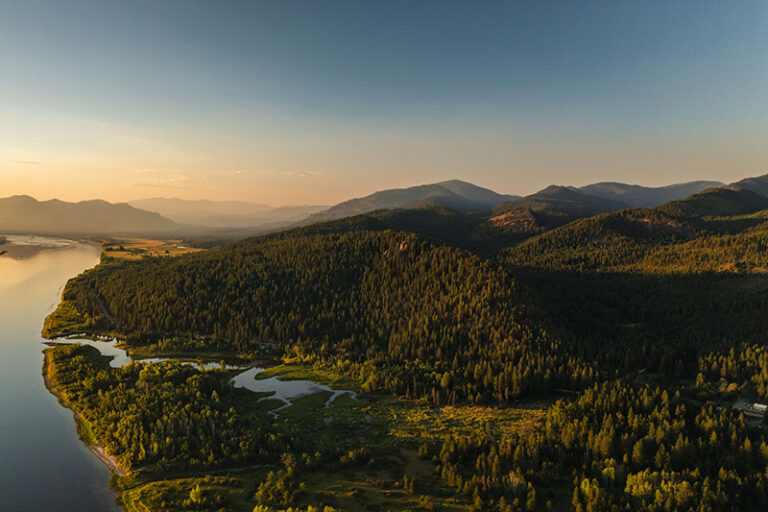Last month’s article about the cluster of plane crashes found in Mount Spokane State Park proved to be an interesting story to a wide range of people. Following the release of the feature article, a number of remarkable emails revealed greater details about some of the events, as well as some corrections worth noting.
Steve Reynolds found the most glaring error. The article incorrectly stated there were four plane crashes, when in fact there were five. On December 13, 1995, a Cessna 340A crashed into Mount Spokane at about 6:15 PM. The pilot, and sole occupant of the aircraft, was fatally injured when he slammed into the west side of the mountain. Searchers reported the debris covered a 300-yard area. “The tail section is the only thing intact. Everything else is in six-inch pieces,” says Sheriff’s Sgt. Jim Finke.
The pilot had flown to Spokane from Yakima, where the Cessna was based. He arrived at about 3PM and waited for a passenger who did not show up. After discovering that his passenger was in Sandpoint, the pilot took off again and headed northeast. Poor weather and poor visibility proved to be the leading causes for this tragedy.
Reynolds recalls how he found the Cessna crash in the spring of 1996 while looking for a good snow slope to teach and practice self-arrest with an ice axe. “Most disturbing—but poignant—was a small cleared spot, in the middle of the impact sites and next to some small alpine trees, where latex gloves and a syringe or two had melted out and were laying on the bare ground. These were immediately adjacent to a wooden, hand-made cross that was only very recently placed at the very location where apparently medical first responders had tried in vain to save the pilot.”
For obvious reasons, the article touched a lot of pilots. Among those that responded, Tom Brattebo of Liberty Lake offered some interesting remarks on flight procedures. As a B-52 pilot stationed at Fairchild AFB shortly after the 1967 KC-135 crash, he recalls particular approach instructions where pilots were required to find Mount Spokane by radar to make certain they cleared the mountain.
Strangely enough, Brattebo also recalled a peculiar incident back around 1994 when he worked at a first-aid station for a NORBA (National Off Road Bike Association) crosscountry race. “I was the ‘older guy’ with a bunch of ‘kids.’ We were watching a part of the course that extended north from the end turn on the Shadow Mountain cross-country ski trail. Some of the kids started bringing me pieces of aluminum that I recognized as pieces of military aircraft. I had been at WSU in 1967 and remembered that crash story.” Tom had actually found the very crash site that influenced his local safety procedures as an Air Force pilot.
Far and away, the most distinguished email came from Bill Williams. He actually served on the rescue and recovery crew for the horrific 1962 KC-135 crash, and he was bold enough to share some first-hand details. He remembers the bus ride from Fairchild, the gray weather all day long, and the gruesome scene of the tragedy.
“My image of the site is not limited to what I saw. The smoke that enveloped the hillside reeked of jet fuel, burned rubber, burned trees, and burned people. It was an odor that I’ll never forget. Later I discarded my fatigues, as I believe most of the other men did as well. Whether it was my imagination or not, it seems that I could not escape that odor for days after we finished our work. I think it had been absorbed by my hair and skin. As I’m sure you can imagine, the work that we had to do to extract our men from that wreckage was unpleasant and distressing.”
More than anyone else, Bill provided specifics that were still tender almost 50 years later. In a crazy turn of events, a few years after the accident, Bill graduated from college with a Master’s degree in Experimental Psychology, and then landed a job at Boeing. He worked alongside the distinguished human factors engineer Konrad Kraft on a team that researched a series of Boeing 727 landing accidents.
The 1947 B-29 wreck ranks as the only Mount Spokane plane crash with survivors. Sgt. Marshall Fine and Sgt. Truman Haley survived the horrific ordeal, and Haley actually continued his military service. Truth be told, Haley joined the U.S. Cavalry Division of the Army in 1938 because he loved horses and they did not have Jeeps until 1941. Later on, he went into the Air Force Corp. Following the B-29 crash, he was released from service in 1948. Next he reenlisted in 1951 and served in Korea. Truman Haley stayed in the Air Force until he retired in 1962.
Truman Haley’s sons recently confirmed plans to visit the site of their father’s plane crash. Fueled by Donna Larson, a Spokane Prime Timer and a former Mount Spokane Ski Patroller, Haley’s descendents are headed to the Bald Knob picnic area of Mount Spokane in mid-September to visit the B-29 ski run. They are both eager to see the site of their father’s memorable plane crash.
All in all, this collection of plane crashes remains a touching and memorable subject. Including the 1995 Cessna plane crash, the total number of lost lives equals 60. Perhaps someday a memorial in Washington’s largest State Park might pay tribute to those service men.
While most articles about Mount Spokane normally flaunt the huckleberry picking, the skiing, or the superb mountain biking and trail running, there’s abundant proof that the Park holds a multitude of backcountry adventures and uncommon experiences. There’s a rich history in those mountains, and while the series of crashes is tragic, there’s a truly unique opportunity to research this aviation history up close.













